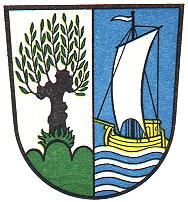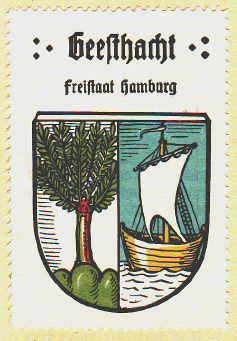Geesthacht: Difference between revisions
Jump to navigation
Jump to search
Knorrepoes (talk | contribs) No edit summary |
Knorrepoes (talk | contribs) |
||
| Line 16: | Line 16: | ||
====Origin/meaning==== | ====Origin/meaning==== | ||
Geesthacht adopted the above arms on November 5, 1915 and received city rights in 1925 | Geesthacht adopted the above arms on November 5, 1915 and received city rights in 1925. | ||
The willow tree symbolises the formerly important willow basket making in the area. The seven branches symbolise the seven oldest known families in the village. The ship symbolises the importance of sailing and fishing through the centuries. | The willow tree symbolises the formerly important willow basket making in the area. The seven branches symbolise the seven oldest known families in the village. The ship symbolises the importance of sailing and fishing through the centuries. | ||
Revision as of 12:13, 29 April 2014
| Heraldry of the World Civic heraldry of Germany - Deutsche Wappen (Gemeindewappen/Kreiswappen) |
GEESTHACHT
State : Schleswig-Holstein
District (Kreis) : Herzogtum Lauenburg
Official blazon
Gespalten von Silber und Blau. Vorn auf grünem Dreiberg eine schwarze Korbweide mit sieben grün belaubten Schößlingen, hinten auf silbernen und blauen Wellen ein einmastiger goldener Kahn mit silbernem Segel.
Origin/meaning
Geesthacht adopted the above arms on November 5, 1915 and received city rights in 1925.
The willow tree symbolises the formerly important willow basket making in the area. The seven branches symbolise the seven oldest known families in the village. The ship symbolises the importance of sailing and fishing through the centuries.
| The arms in the Kaffee Hag albums +/- 1925 |
Literature : Stadler, 1964-1971, 8 volumes; Hupp, O: Kaffee Hag albums, 1920s


